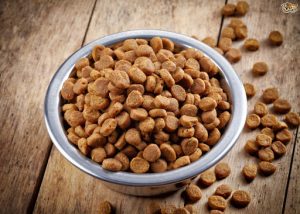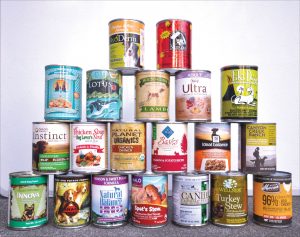Food storage is very important in taking care of any pet as they can be very sensitive to the quality of food they are being fed with. They can either become healthier and stronger or become sick, even leading to death. Exposing your dog’s food to things that can contaminate it could result in the food becoming stale and unpleasant for your dog.
 Also, considering how expensive dog food is, it is very important to know how to store it properly so that you do not end up wasting food and money eventually.
Also, considering how expensive dog food is, it is very important to know how to store it properly so that you do not end up wasting food and money eventually.
On a general note, one of the very first things that you need to check is the expiry date of the food when purchasing from the store. This will save you the trouble of buying food that is almost expired and can be dangerous to your dog’s help. It also helps you to monitor the lifespan of the food, ensuring that your dog finishes it before its expiry date, or you throw it away.
Many dog food brands have short lifespans therefore, it is safer than your dog food is exhausted before the expiry date. Some pet owners believe that the food is still good even after its expiry date. While this is debatable, it is important that you consider the health of your pet first and play safe.
Dry Food
Dry pet food may seem like the easiest to preserve, but you could reduce the shelf life of your pet’s food drastically if you fail to store it well.
-
Make sure your food bag is properly sealed.
Leaving your dog’s food open or not properly closed can make it prone to air and that could result in the food losing its freshness. The U.S. Food and Drug Administration (FDA) advises that pet owners should seal their pet food because it helps in reducing the risk of food contamination by bacteria as a result of exposure to air. Ensure you use airtight containers as they are more effective in keeping air from getting into the food, further preserving the food’s shelf life.
-
Use original packaging
You might be doing this already, but it would not be too much to reemphasize on it. Food bags for pets are specifically designed to keep anything that can damage the food out, making it the best option for storing your pet’s food. It also provides an added layer of protection for your dog’s food, preserving essential nutrients and keeping out harmful elements.
-
Keep your dog food container clean
 Some dog owners are accustomed to the habit of topping the dog food storage container with a new bag of dog food as soon as it runs low. Pet experts have shown that this is not a very good idea. It is highly recommended that you thoroughly wash your storage containers between refills. This is due to the fact that oils from the old bag can end up contaminating the fresh food. Proper washing should be done with hot and soapy water before it is rinsed and dried completely, and then refilled. If the container is not dried completely, it could cause mold and mildew to grow on the food.
Some dog owners are accustomed to the habit of topping the dog food storage container with a new bag of dog food as soon as it runs low. Pet experts have shown that this is not a very good idea. It is highly recommended that you thoroughly wash your storage containers between refills. This is due to the fact that oils from the old bag can end up contaminating the fresh food. Proper washing should be done with hot and soapy water before it is rinsed and dried completely, and then refilled. If the container is not dried completely, it could cause mold and mildew to grow on the food.
-
Store in a cool and dry place
This is very important in maintaining the nutritional quality and shelf life of your dog’s food. If exposed to moisture, molds could grow on your dog’s food, and this can be very dangerous to the dog’s health. An increase in temperature is also harmful to the nutrients in the food, causing them to break down. So, avoid storing your pet’s food in places where there is a tendency of high temperature.
Canned Food
 Canned dog food can last for a long period of time, provided it is not opened. However, once it is opened, you have up to 24 hours to store the food properly if your dog is unable to finish it in one meal.
Canned dog food can last for a long period of time, provided it is not opened. However, once it is opened, you have up to 24 hours to store the food properly if your dog is unable to finish it in one meal.
If you find a dent or air bubbles or swellings on the can, it is important that you discard that can because they are indicators that the seal of the can have been compromised and bacteria is growing inside your dog’s food.
-
Seal and Refrigerate to Preserve Freshness
If your dog is unable to finish the food in one meal, the remaining canned food should be stored in a refrigerator for three to five days, after which you should dispose of it as it might already be contaminated. Also, ensure that you regularly check for signs that it is spoilt such as it being watery or a change in smell or texture. In case you notice any of these signs, throw away the canned food.
-
Transfer to a smaller air-tight container
You might want to use a smaller container, especially if the remaining portion of your dog’s meal is not so much. This will help in further reducing the risk of contamination.
Finally, you could be saving more if you knew the exact amount of food your dog eats. This would help you reduce the rate at which you throw out your dog’s food, as well as reduce the chances of your dog being exposed to contaminated food. It’s our duty to pay attention to our dog kid’s health. If you are a careful parent, then you must refer to All You Need to Know about Your Dog’s health.

1 Comment